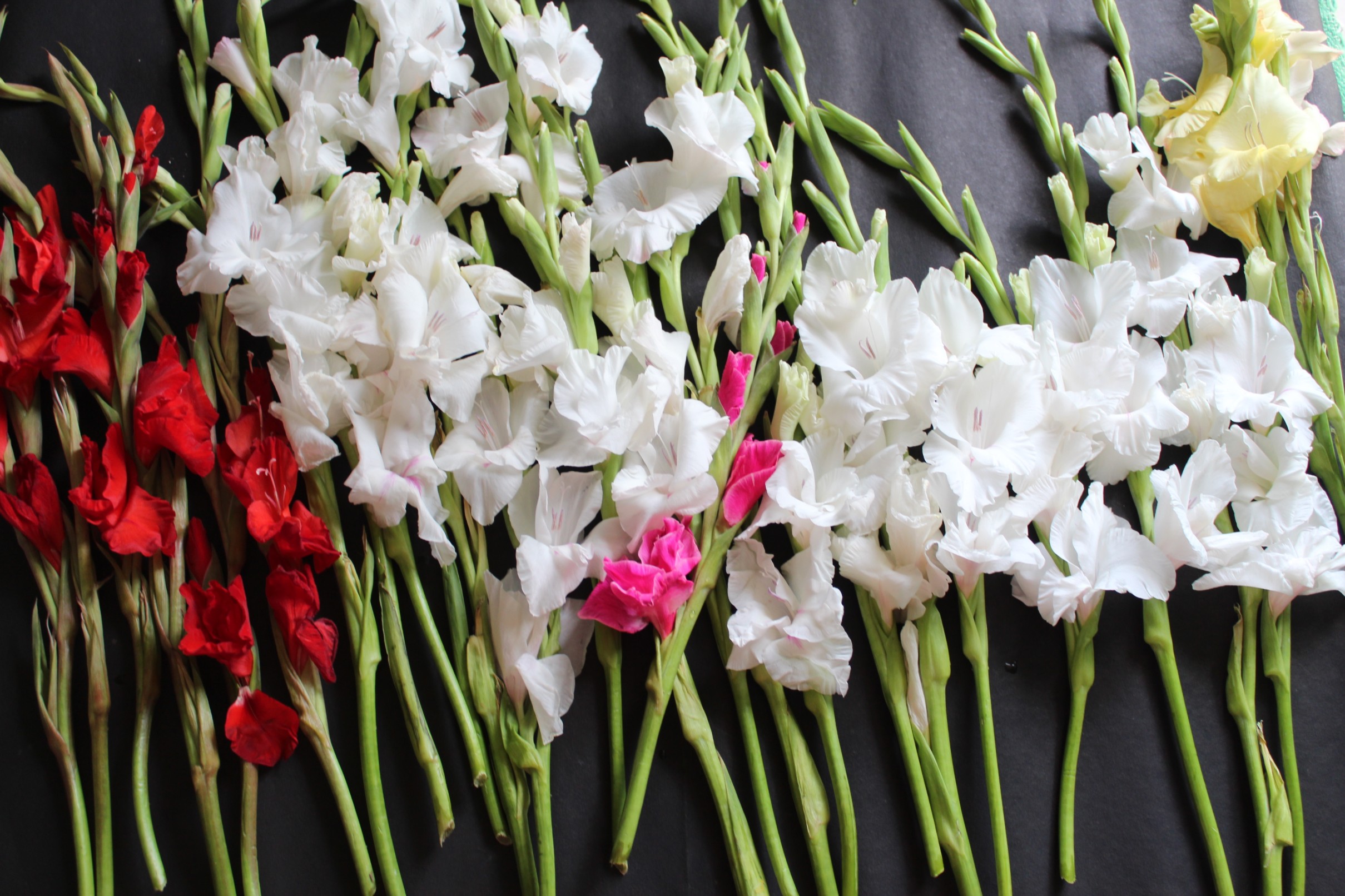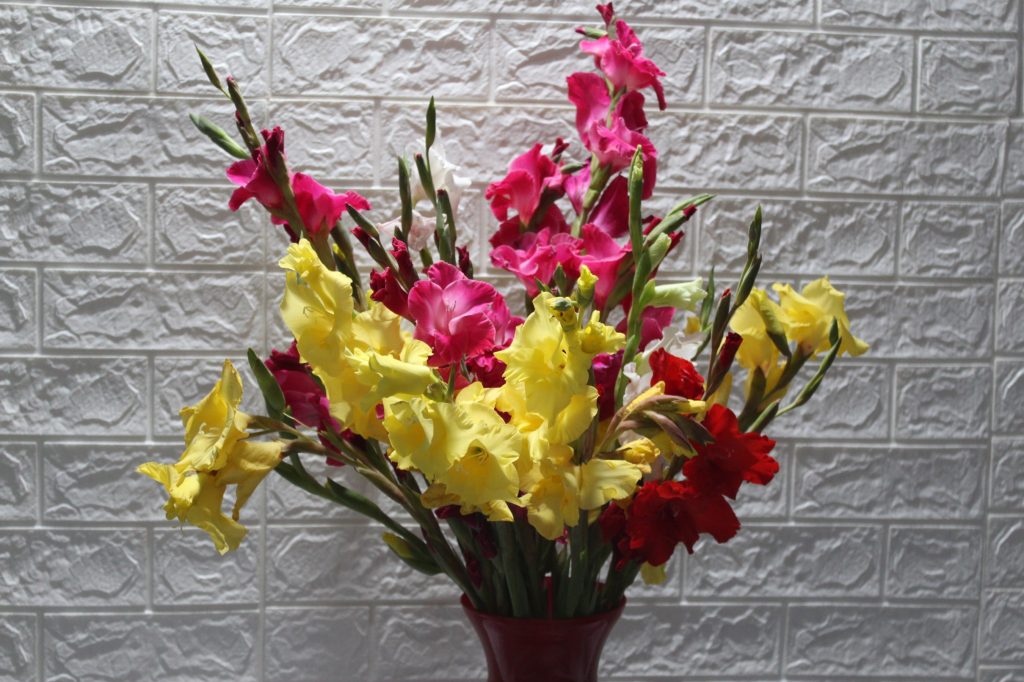Gladiolus are perennial flowering plants from the iris family. These plants have a long history, and are native to the Mediterranean region, South and East Africa, and the Arabian Peninsula. There are approximately 200 known species. These are also called ‘sword lilies’. The plant blooms with a bunch of vertically tall arranged flowers. The flowers come in a number of colours. The colors include shades of green, orange, pink, purple, red, white, yellow, and bicolor combinations.
These plants bloom during March to Nov in North India.

How to Grow Gladiolus
The plant grows from a thick corm, which is similar to bulbs but has a flattened bottom. Healthy corms are essential for producing robust plants with flowers of maximum size. A healthy corm should have smooth husks that are not discolored or damaged.
To grow plants from corms, choose a sunny spot. The soil should be organically rich and well draining. The soil having pH between 6-6.5 is the best. Add natural compost to boost fertility of the soil. Plant the corms 4 inches deep to provide a good support to the plant when it grows to its full. Plant gladioli in groups or rows along foundations for a border. When planting in groups, plant them 8-10 inches apart.When the foliage becomes 8 inches tall, you can apply a slow release fertilizer.
Gladiolus Care
Light
Gladiolus grows and flowers best in full sun. The plant will survive in partial shade as well but may not produce the flower colours with full vibrance.
Soil
Gladiolus likes well-drained, sandy loam soil. The corms will rot if the soil is too boggy and wet.
Watering
Gladiolus need ample water throughout the growing season. Keep gladiolus plants well watered with at least 1 inch of water a week. During dry weather, water the plants regularly. Watering should soak the ground thoroughly. Avoid daily light waterings.


Fertilizers
Add compost to the soil before planting gladiolus. Add an organic, water-soluble, and slow release fertilizer when the plants are 8-10 inches tall, and again when the flowers start to show color.
Pruning
Gladiolus don’t require pruning.
Mulching
To preserve soil moisture, mulch plants once they emerge from the soil with a 2- 3 inch thick layer of mulch.
Pests/ Disease
The best way to avoid insects and disease problems on gladiolus is to buy healthy corms that are not soft or crumbly. Discard any damaged or rotting corms. The biggest pest of gladiolus is a small insect called thrips.Treat thrips with insect soap.


Uses of Gladiolus Plant
Gladiolus flowers have a lot of medicinal uses and hence can be used to cure common colds, constipation and diarrhoea.
It is ideal as a cut flower, good for beds, borders, for making bouquets and does well in pots.
